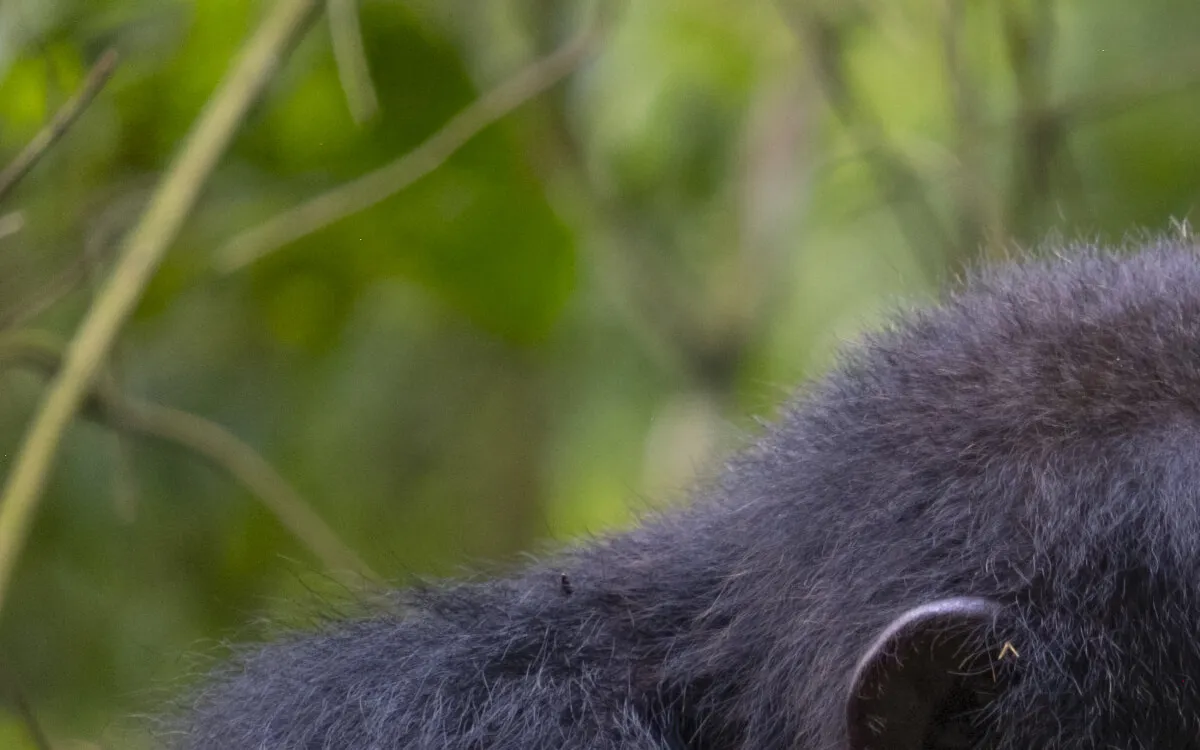
Recent research conducted by scientists observing chimpanzees in the Budongo Forest of Uganda has unveiled a remarkable aspect of primate behavior: these intelligent creatures not only care for their own injuries but also extend their compassionate support to others within their communities. This groundbreaking discovery has the potential to illuminate the origins of human medicine and the development of health care practices.
The study focused on two distinct communities of chimpanzees: Sonso and Waibira. Like all chimpanzees, members of these communities frequently encounter injuries due to fights, accidents, or human-induced snares. Alarmingly, approximately 40% of individuals in the Sonso community have been observed with snare injuries. Over four months, researchers meticulously observed these communities, supplemented by video evidence from the Great Ape Dictionary database, extensive logbooks containing decades of observational data, and insights from other scientists who have witnessed chimpanzee health care behaviors.
During their observations, the researchers identified various plants utilized by chimpanzees for external care, discovering that many possessed chemical properties conducive to wound healing and had established traditional medicinal uses. In total, the researchers recorded 12 injuries in Sonso, primarily resulting from intra-group conflicts. Meanwhile, the Waibira community reported five injuries—one female affected by a snare and four males involved in fights. Notably, the Sonso community exhibited a higher incidence of care behaviors compared to Waibira, potentially due to differences in social hierarchy stability or better opportunities for observation in the more habituated Sonso community.
The researchers documented a total of 41 instances of care, which included seven cases of prosocial care—actions taken to assist others—and 34 instances of self-care. These care behaviors often encompassed multiple techniques aimed at addressing different aspects of a wound or reflecting individual chimpanzee preferences. Techniques identified included direct licking of wounds, which not only removes debris but may also apply antimicrobial properties from saliva; finger licking followed by pressing on the wound; leaf-dabbing; and the application of chewed plant materials directly onto wounds. Remarkably, all chimpanzees involved in the study showed signs of recovery from their injuries, although the exact outcome without intervention remains unknown.
The study also documented hygiene behaviors among chimpanzees, such as using leaves to clean genitals post-mating and wiping the anus after defecation. These actions could play a crucial role in preventing infections and maintaining overall health.
Among the seven documented instances of prosocial care, the researchers identified four cases of wound treatment, two instances of snare removal assistance, and one case of hygiene support. Notably, care was not preferentially given based on sex or age, and on four occasions, assistance was provided to genetically unrelated individuals. This suggests that chimpanzees possess the ability to recognize suffering or need in others and take deliberate action to alleviate it, even when no direct genetic advantage is present. Dr. Elodie Freymann of the University of Oxford, the study's lead author, emphasizes the importance of further research to explore the social and ecological contexts influencing these caring behaviors.
The researchers speculate that the high incidence of injuries and fatalities due to snares may heighten the likelihood of chimpanzees caring for one another's wounds in the Budongo Forest. However, they acknowledge the necessity for more data to substantiate this hypothesis. Dr. Freymann also cautions that the differences in habituation between the Sonso and Waibira communities may introduce observation biases, particularly for rare behaviors like prosocial health care. Although the study documented various plants used in health care contexts, further pharmacological analyses are essential to confirm their specific medicinal properties and effectiveness.
In conclusion, while the relative rarity of prosocial health care poses challenges in identifying patterns of when and why such care is provided or withheld, this research opens new avenues for understanding the evolution of health care behaviors and the roots of modern medicine.